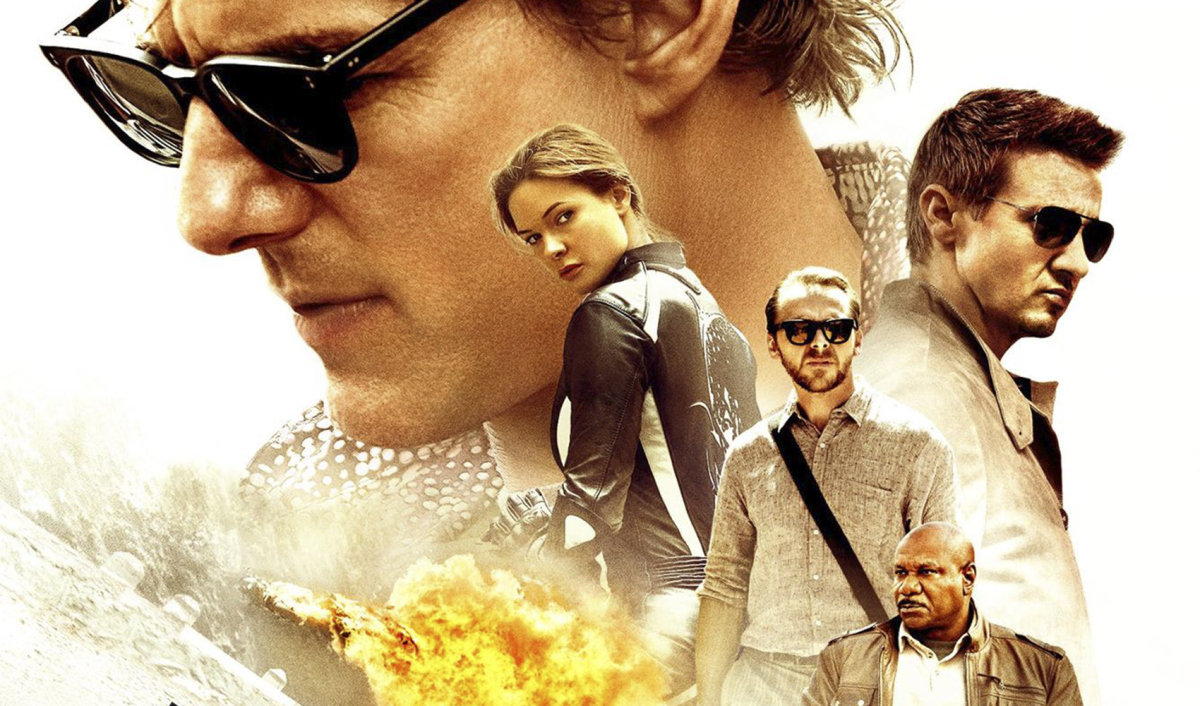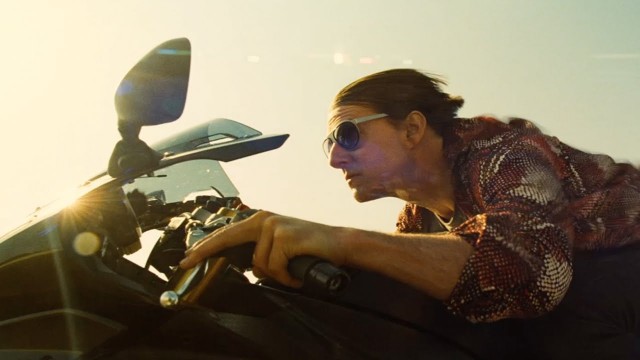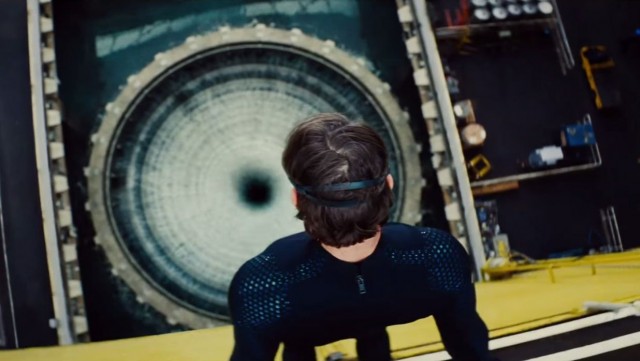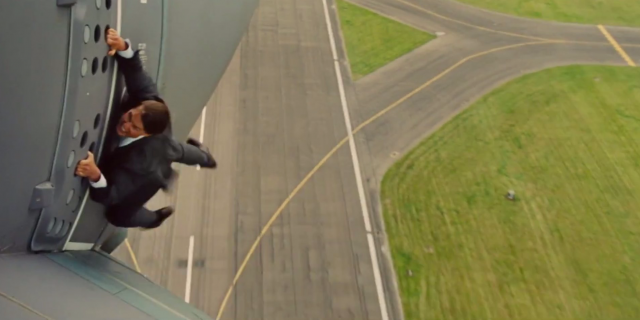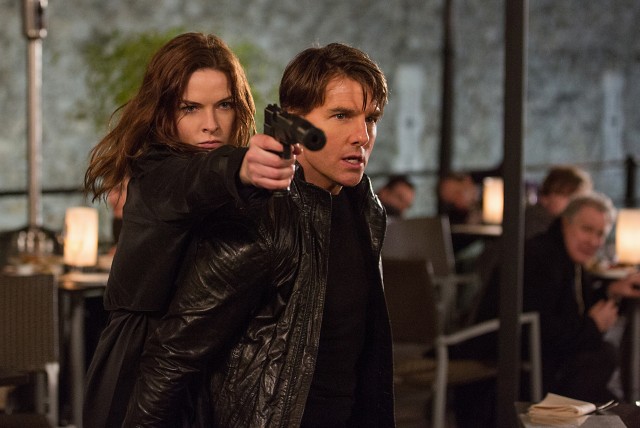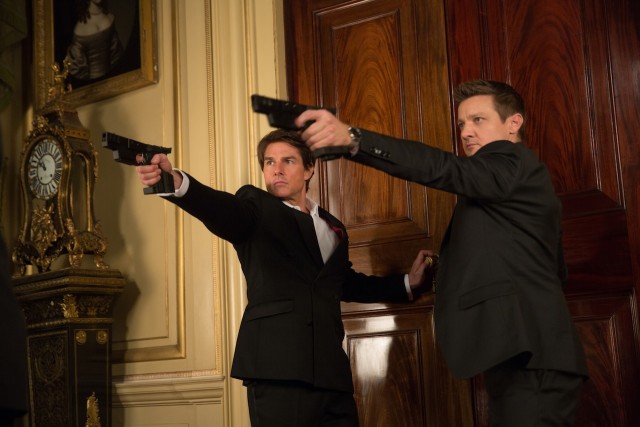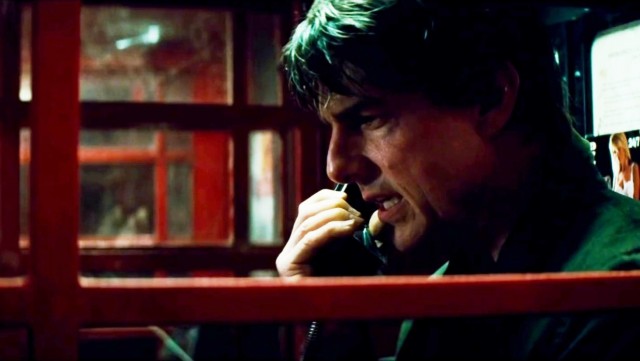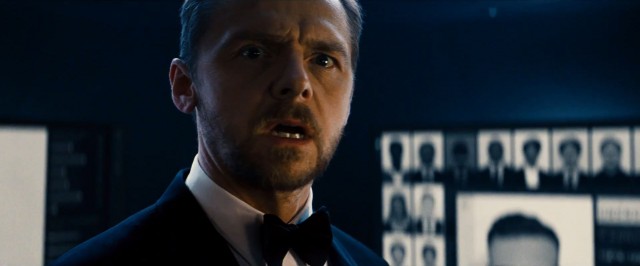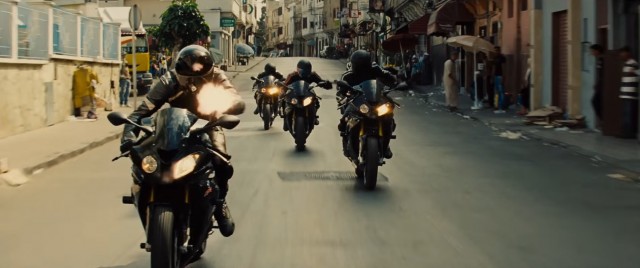Mission: Impossible – Rogue Nation is neither the best nor the worst Mission: Impossible movie. It doesn’t quite match the franchise high point of Mission: Impossible – Ghost Protocol, though it also avoids disturbing the goodwill and appeal from that movie as well. Instead, Mission: Impossible – Rogue Nation sits comfortably in the exact middle of the film franchise’s track record, delivering a reliable new mission for Ethan Hunt and friends that maintains much of what makes these movies so fun and exciting now, even if it doesn’t quite have that added sizzle of the previous 2011 installment.
When you take away the inevitable comparisons to the rest of Paramount’s long-running and oft-changing spy movie franchise however, Mission: Impossible – Rogue Nation stands up all the better as one of this Summer’s better action flicks, and a continued high quality standard for spy movies in a spy movie-heavy year, both those played straight and those played for laughs alike. This fifth Mission: Impossible entry is certainly not the best yet, but it’s still very entertaining, being packed with intensely thrilling action scenes, and ludicrous set pieces that lead to plenty of enjoyable mayhem, in spite of their sometimes admitted lack of realism.
Of course, at the end of the day, despite everything it does well, Mission: Impossible – Rogue Nation sticks pretty closely to the modern Mission: Impossible movie formula, for better or for worse. If you’re a fan of these movies, then you’ll definitely love Mission: Impossible – Rogue Nation, but if you never saw their appeal, then this movie doesn’t do much to change your mind. It’s still another mission with threats to dissolve the Impossible Mission Force (yes, they still insist on being called that), rogue agents left and right, balking at government authorities, and a big emphasis on impractical gadgets that are just explained enough for us not to question them too much.
Considering some of these movies’ bumpy beginnings before they fully hit their stride with Mission: Impossible III in 2006, the Mission: Impossible movies have since perfected a great recipe for brainless fun. If you have a taste for that particular recipe, than Mission: Impossible – Rogue Nation will provide you with yet another tasty Summer treat.
Once again, Tom Cruise headlines our latest Mission: Impossible offering as IMF super-agent, Ethan Hunt, a man presumably sent from Krypton to be empowered by Earth’s yellow sun, continually cheat death, and never actually run out of stamina. As usual, Hunt might as well be running everywhere in a cape and tights, laughing triumphantly as he deflects hails of bullets with his heaving pecs. At the very least though, Mission: Impossible – Rogue Nation actually derives some clever humour from poking fun at Cruise’s infamously un-killable super-spy hero, finally addressing Hunt’s superhuman reputation with a few playful winks that actually work to great effect.
It’s reasonable to assume that Cruise and this movie’s writer-director, Christopher McQuarrie are probably pals in real life, with McQuarrie scripting former Cruise vehicles, Valkyrie and Edge of Tomorrow, and both writing and directing for Cruise in 2012’s well-received but weak-selling Jack Reacher. After Jack Reacher especially, Cruise and McQuarrie function together like a well-oiled machine, and that really works to the benefit of the still-preposterous Mission: Impossible – Rogue Nation. Not much has changed with one of Cruise’s most well-known characters, with Hunt still moving between breathless urgency, quiet charm and ribbing arrogance, being more action superstar than man. I imagine that fans wouldn’t want it any other way.
Of course, this same conservative touch holds true with the other returning Mission: Impossible movie veterans, even Jeremy Renner, whose ashamed IMF analyst and agent-in-denial, William Brandt is yet again returning to the field, after his story began in the previous Mission: Impossible – Ghost Protocol. Now free of his demons, Brandt is left unencumbered as the snarky deflector that hilariously tries to justify Cruise’s loose cannon behaviour to government authorities, at least for a little while. Eventually, when this gag has run its course, Brandt suits up with everyone else to join the chaos in the field, finding some time to butt heads with Hunt, but never truly managing to dissuade Hunt’s plans. Apparently. Brandt routinely forgets that Hunt is some sort of demigod on loan from Mount Olympus, and should clearly never be questioned, no matter how crazy he sounds.
Simon Pegg is also largely sticking to the same playbook that he’s had since his debut in Mission: Impossible III, bringing Benji Dunn back to the field with his same flailing, hysterical wit. Benji is still a goof, and Pegg plays him as such, certainly not being useless, but still deftly balancing the line between being annoying and being rightfully terrified of Cruise’s latest disregard for human limits. He plays a nice contrast to the reserved and cool Luther Stickell, with Ving Rhames still not having a massive part in the movie, but keeping tradition of being the only other actor in the franchise to appear in every Mission: Impossible movie to date besides Cruise himself. There’s a bit of overlap with Benji and Luther, since they’re both computer hackers, which might explain why Luther sat out most of Mission: Impossible – Ghost Protocol, as that was Benji’s debut as a field agent. Still, the movie finds useful roles for both men, especially since Luther is definitely more useful in combat than Benji is.
The most noteworthy new addition to the movie is Rebecca Ferguson, replacing Paula Patton as the token female lead, which, like directors and IMF bosses, the franchise sees fit to replace with every new installment. Ferguson plays undercover British agent, Ilsa Faust, who is arguably the best character in the movie, sometimes even surpassing the appeal of Hunt himself. Ilsa is brilliantly portrayed to have her true allegiances perpetually in question, and she’s the one character that justifies the fear and uncertainty around the new threat, The Syndicate, a so-called ‘anti-IMF’ and ‘Rogue Nation’, hence the movie’s title, comprised entirely of disavowed and presumed-dead government agents from around the world, which are aiming to become an independent world superpower. They sound like a movie version of Outer Heaven from Metal Gear, frankly, if they were viewed through a Mission: Impossible lens. I would say that, if The Syndicate didn’t happen to be the primary force of villains from the Mission: Impossible TV series from the 1960’s that inspired these movies in the first place.
Sure, The Syndicate is an absolutely ludicrous enemy when you really think about it, particularly how an enterprise that large, covert and widespread is somehow fully managed by just one convenient bad guy to chase, the stone-cold Solomon Lane, played by Sean Harris. Still, it’s refreshing to have a villain that’s not just another IMF traitor or arms dealer, especially since Harris does manage to bring some of the twisted, sadistic appeal of one of the series’ best villains to date, Mission: Impossible III’s Owen Davian, played by the late Philip Seymour Hoffman. These bad guys may be the most absurd yet, but at least the movie is making an effort to create distinct new villains, even if Mission: Impossible – Rogue Nation doesn’t really capture the grand scope or reach of an entire worldwide network of disavowed rogue agents, which still feel like they’re mostly being represented by one convenient target more than anyone else.
Likewise, the supposed anti-IMF presence is shouldered entirely by Alec Baldwin, who really doesn’t have much screentime in the end, as CIA honcho, Alan Huntley. Baldwin shows up mostly to yell at Brandt for the early parts of the movie, getting a piece of the action for the climax, but even then, Baldwin is largely left to stand and bow to the outstanding genius and superiority of Ethan Hunt. That’s the singularity that any presence in the Mission: Impossible movies is ultimately sucked into, after all.
There’s not much to say about the returning cast members, who aren’t really changing things up from the past couple of movies especially, but the refreshing presence of Ferguson, and the more ambitious villain idea, help to nonetheless carve out enough of a character identity for Mission: Impossible – Rogue Nation. It might have benefited from deviating at least a tad more from the familiar Mission: Impossible movie playbook though.
Mission: Impossible – Rogue Nation begins with, big shock, the IMF coming under fire and being threatened with closure, and Ethan Hunt being considered a rogue asset that’s operating outside of government authority. Brandt even says at one point that this is probably the group’s last mission, but come on. They have to know that this is Tuesday at the IMF at this point. You’d think the entire IMF organization looking like a bunch of unreliable yahoos would be sad routine for the American government by now, and yet, the organization is perpetually allowed to go on, largely on technicalities.
Still, that’s not so bad, since it means that we can keep getting more good Mission: Impossible movies, at least at this point. True to form, Mission: Impossible – Rogue Nation gives you exactly the Mission: Impossible movie that you would want, despite the continued silliness of the agency that’s actually pushing it forward.
As easy as it is to keep poking fun at the IMF’s horrendous luck though, the idea behind an ‘anti-IMF’ working to discredit the organization, and particularly its star player, Ethan Hunt, is actually a very clever one. That’s why it’s a let-down that the movie doesn’t make The Syndicate feel like as large a threat as they truly are. It would be good if a sequel brought The Syndicate back to truly feel like the global menace that they’re supposed to be, particularly with the Mission: Impossible movies’ love of location-hopping, which is well-preserved in Mission: Impossible – Rogue Nation, moving us from Germany to Morocco to England to Austria, and leaving Hunt’s reliable trail of destruction all around them.
All things considered though, Mission: Impossible – Rogue Nation has a story that gives audiences what they want, and that certainly can’t be faulted when the movie turns out well. It’s your usual brand of ensemble cat-and-mouse that the Mission: Impossible movies pride themselves on, but there’s at least enough twists and turns in Mission: Impossible – Rogue Nation to keep audiences invested throughout, even if Mission: Impossible – Ghost Protocol felt like a slightly bigger, grander spectacle.
Still, the increased cleverness behind the story of Mission: Impossible – Rogue Nation is praiseworthy in its own right, even if that narrative cleverness is balanced by a whole lot of spectacular absurdity, yet again.
Christopher McQuarrie grounds his Mission: Impossible movie a little more than Brad Bird did with his previous installment in 2011, without completely downgrading the quality of the action. The large, imposing challenges of Mission: Impossible – Ghost Protocol have now been largely replaced by more close-quarters, precarious feats of human strength and ingenuity. No one is climbing skyscrapers or running through sandstorms this time (though Hunt does latch on to a plane taking off in the intro sequence, which was all over the marketing too), though the new obstacles are nonetheless engaging, and still make for an intense action movie, so long as you don’t mind the lack of realism in most of them.
It’s inevitable that Mission: Impossible – Rogue Nation isn’t quite so grounded and brutal as Jack Reacher was, but McQuarrie’s more close-quarters direction does give the movie an increased sense of power and destructive appeal, which helps to compensate for the reduction of scale in contrast to Mission: Impossible – Ghost Protocol. Ironically, a larger-scale movie might have made more sense when you have a widespread organization of villains like The Syndicate, rather than the actual lone arms dealer like you had in Mission: Impossible – Ghost Protocol, and that feels like the only time that McQuarrie’s vision shows some cracks, since the idea of a global network of bad guys is somewhat betrayed by the more down-to-earth presentation.
That’s ultimately minor though, since McQuarrie effortlessly navigates around his movie, benefiting from also writing the script. He directs Cruise and the others flawlessly, creating action scenes that feel tight and well-choreographed, even during high-speed bike chases and the like, while his attention to real-time detail is also exemplary, making the group’s operations carry with them a sense of real, believable urgency. McQuarrie really knows his way around moral greys as well, which is best illustrated through the impeccable character of Ilsa Faust, even if it doesn’t ultimately extend to creating more than just another by-the-numbers antagonist to represent a much larger and better idea for the bad guys than Mission: Impossible has had before. The cat-and-mouse elements of Mission: Impossible are still realized brilliantly by McQuarrie though, who expertly avoids telegraphing his story, making the threats unpredictable, even if not truly as groundbreaking as they could have been.
While not really the fault of McQuarrie, Mission: Impossible – Rogue Nation also isn’t as effective in its IMAX cut as Mission: Impossible – Ghost Protocol was. Mission: Impossible – Ghost Protocol was a fantastic experience in IMAX, especially since the movie filmed some of its key sequences with IMAX cameras, but Mission: Impossible – Rogue Nation is noticeably poorer optimized to IMAX screens, and doesn’t quite elicit the same grand, enhanced sense of scale as its predecessor did in IMAX showings. The IMAX cut may still be worth springing for thanks to the more powerful and theatre-shaking audio that Mission: Impossible – Rogue Nation thankfully maintains with IMAX speaker setups, but that’s definitely not essential. If you’d rather stick with a traditional digital screening, you’re not missing anything by shirking the IMAX version of this movie.
McQuarrie enlists his Jack Reacher composer, Joe Kraemer to score the music for Mission: Impossible – Rogue Nation, which, like many other elements of the movie, is very reliably rooted in Mission: Impossible convention. Again, the score doesn’t quite leap to life as well as the past couple of soundtracks by Michael Giacchino have, who scored both the third and fourth movies, but Kraemer’s score is acceptable. It’s got your usual remixes of the iconic Mission: Impossible theme song, along with a more methodical, calculated soundtrack that reflects McQuarrie’s acute attention to detail in realizing the intimately-crafted action set pieces.
The rest of the audio, like I said, is best experienced in IMAX, but is quite enjoyable in theatrical showings in general. As usual, the hard-hitting crunches of destroyed vehicles and deafening gunshots that constantly sound throughout each action bit are the bread and butter of Mission: Impossible theatrical viewings, which remain imperative for those interested in Mission: Impossible – Rogue Nation. You do get a bit more added punch in IMAX, but again, that’s not really worth the extra dollars if you could care less about immersive audio, since the IMAX picture quality has sadly seen a downgrade since Mission: Impossible – Ghost Protocol.
Mission: Impossible – Rogue Nation is a worthy continuation of the long-running Mission: Impossible movie franchise, one that feels exciting and unpredictable in its narrative, even if the rest of the presentation is sticking pretty closely to what’s already worked for this series. The IMF veterans haven’t changed a bit, right down to Ethan Hunt being some sort of undercover Terminator, but they’re still given interesting new challenges to tackle, and that’s perhaps more beneficial to this series than raw character development may be.
Ultimately, maybe it’s a good thing that it’s still business as usual for Hunt and co., who are still doing what they do best, and not breaking a sweat. Mission: Impossible – Rogue Nation may not feel as groundbreaking as Mission: Impossible – Ghost Protocol did back in 2011, but it’s nonetheless a great Mission: Impossible movie, and a great action movie on its own merits. It’s no Mad Max: Fury Road, but it’s still one of the better Summer blockbuster offerings of this year for sure.
Even when it does adhere to convention however, Mission: Impossible – Rogue Nation is finely-crafted, very exciting, and comes highly recommended for Mission: Impossible fans, or action movie fans in general. Again, if you dislike the Mission: Impossible movies, there’s nothing for you in the more conservative Mission: Impossible – Rogue Nation, but Ethan Hunt being his usual superhuman self, and the IMF still fighting sensible government intervention at every turn, maintains all of the appeal that they ever did.
So long as you still don’t mind the complete lack of common sense.

